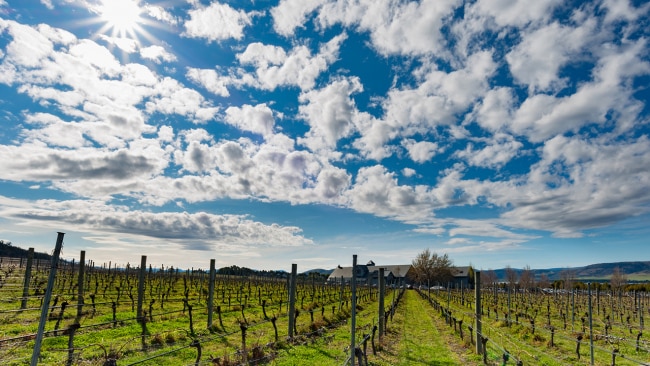Tasmania is the place to be to see the spectacular Aurora Australis
Everyone knows about the northern lights — but what about the southern version? Tasmania offers the perfect perspective for when particles collide in the Earth’s atmosphere.
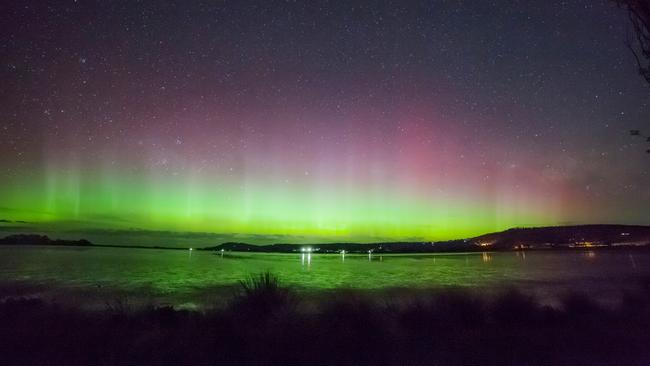
TAS
Don't miss out on the headlines from TAS. Followed categories will be added to My News.
I have never witnessed them, but the Northern Lights (aurora borealis) — mesmerising natural lights that dance and sway eerily across the night sky — have long been a source of fascination. When I learned that the Southern Lights (aurora australis), a similar phenomenon, are occasionally visible from Tasmania, I was overjoyed.
I found, though, that auroras can be elusive — they only occur under certain conditions. And for visitors to Tasmania, being there at the right time is mostly a matter of luck.
13 AMAZING SIGHTS TO CATCH IN AUSTRALIA
FORGET NORTHERN LIGHTS, THIS IS BETTER
LUXURY WAY TO SEE THE NORTHERN LIGHTS
WHAT ARE THE SOUTHERN LIGHTS?
Like the Northern Lights, the Southern Lights occur when charged particles from the sun collide with gases in the Earth’s upper atmosphere. The solar wind constantly carries these particles from the sun towards Earth.
However, when coronal mass ejections (CMEs) and solar storms occur, the fast-moving particles slam into our magnetosphere, travel along our magnetic field lines, and enter our atmosphere at the magnetic North and South poles. The aurora’s colours depend on the gas with which they collide and how much energy is exchanged during the collision. Green comes from oxygen, while blue or violet is the result of nitrogen.
Tasmanian Margaret Sonnemann first saw an aurora in 1997 — “an astonishing and joy-filled experience”, she recalls. “Photos don’t do them justice. Their movement is like seeing music.” She has now witnessed hundreds of auroras; founded the Aurora Australis Tasmania Facebook group; and authored The Aurora Chasers Handbook: In Pursuit of Tasmania’s Southern Lights.
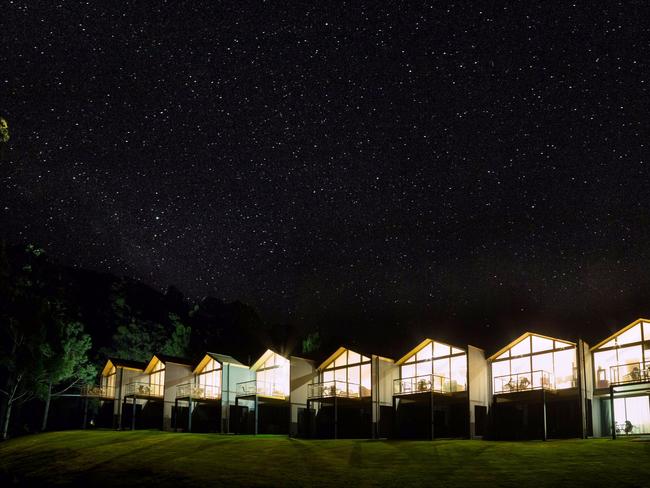
WHAT CONDITIONS ARE REQUIRED TO WITNESS AN AURORA IN TASMANIA?
In addition to a recent CME or solar storm, necessary conditions include negative (or southward) Bz (the orientation of the interplanetary magnetic field) as well as a high solar wind speed, density, and K-index, Margaret says. The K-index measures the level of disturbance in the Earth’s magnetic field; k-indices kL (Launceston) and kH (Hobart), measured by magnetometers in Tasmania, are the ones to watch.
The weather also needs to co-operate. If clouds obscure your view to the south, you probably won’t see an aurora. Winter has more hours of darkness, so your chances are higher.
How far in advance can you predict the possibility?
“When we have a CME (depending on its size, duration and velocity) or a coronal hole facing Earth, we can hope for an aurora in about three days,” Margaret says. “This is how long it takes for the solar wind to reach Earth. We have a further heads-up when the solar storm reaches NASA’s Advanced Composition Explorer (ACE) satellite; at that point, we can hope for an aurora in about 45 minutes. However, there have been huge CMEs, perfectly Earth-directed, that simply never arrived. No one knows why. Also, if all the other ducks are in a row (high wind speed, K-index, and density) and the Bz never goes negative (or south), no aurora. And it could be raining …”
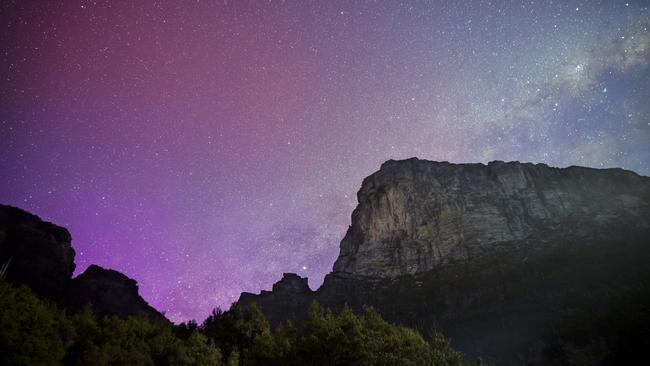
ANY FORECASTING TOOLS?
Experienced aurora chasers learn to interpret raw data from NASA and BoM, Margaret says. However, her favourite site is Aurora Service’s Aurora Forecast.
IS IT SEEN WITH THE NAKED EYE?
Long-exposure digital photographs often show bright, colourful aurora displays. The long exposure “lets more light in and therefore picks up more colour than we can see with the naked eye”, Margaret explains.
Seeing an aurora without a camera is possible. “If the Bz is -10 or below and the (solar) wind speed is over 400km/sec, then the local K-index (kH and kL) tells me if I’m likely to see the aurora naked eye and how high I can expect it to be. With a K-index of 3, I expect to be able to photograph an aurora low on the horizon, but not see it naked eye. With a K-index of 4, I expect to see something, perhaps a glow, naked eye, a bit higher in the sky. And with a K-index of 7, the aurora would be virtually overhead, with naked eye colour.”
WHERE CAN YOU SEE THEM?
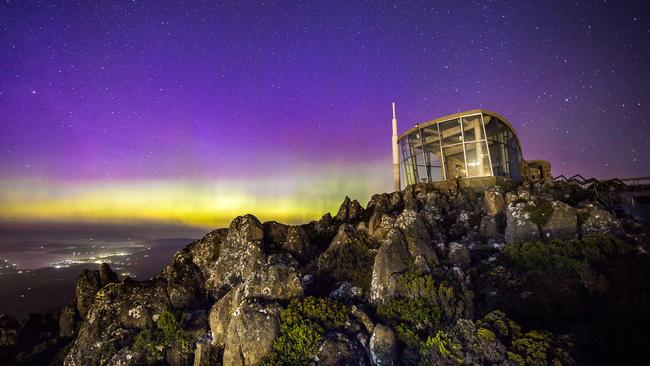
The Aurora Australis Tasmania Facebook group includes a Google map showing viewing locations all over Tasmania. Near Hobart, sites include Mt Wellington, Mt Nelson, and South Arm lookout. The group’s page notes that you need a spot away from light pollution, with a clear view (no mountains, trees) to the south.
SHOULD YOU BOOK A TASSIE TRIP IN HOPE OF SEEING THEM?
Since you can’t predict the possibility of an aurora more than a few days in advance, you’d need to book your trip at the last minute to maximise your chances of being there at the right time. Otherwise, focus your itinerary on all the other activities in Tasmania, but keep an eye on the apps and the Facebook group.
The writer travelled with the assistance of Tourism Tasmania
STAYING THERE
To reach most aurora viewing locations, you need a car … and accommodation with parking. In Hobart, Salamanca Wharf Hotel offers free secure parking for guests.
At Eaglehawk Neck, Lufra Hotel and Apartments is across the road from an aurora viewing location.
MORE
Aurora Service’s Aurora Forecast
Originally published as Tasmania is the place to be to see the spectacular Aurora Australis


